Are you struggling to choose wardrobes and armoires that fit your bedroom and lifestyle? Have you purchased storage furniture before, only to find it bulky, mismatched, or impractical? Are you confused by the options—hinged doors, sliding panels, mirrored fronts, wooden frames, or MDF interiors? Choosing the right wardrobes and armoires can feel overwhelming without a clear plan, especially when every piece claims to be “perfect” for modern homes.
Choosing wardrobes and armoires is more than just picking storage units—it’s about enhancing your bedroom’s form and function. These essential pieces of furniture define your daily routine, influence the look of your space, and impact how efficiently you live. Whether you’re setting up a new home or refreshing your bedroom layout, learning how to choose wardrobes and armoires with confidence will save you time, money, and stress.
This article will show you how to choose wardrobes and armoires based on your space, storage needs, and personal taste—without compromising on style or quality.
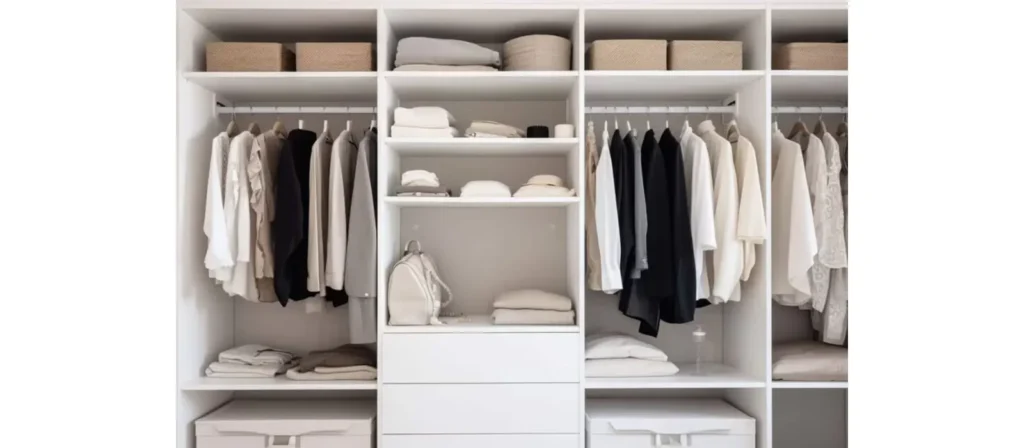
What is a Wardrobe?
A wardrobe is a versatile storage unit primarily used for hanging clothes, storing folded garments, and organizing accessories. Modern wardrobes come in various styles and sizes, from compact single-door units to expansive multi-door systems. They often feature a combination of hanging rails, shelves, and drawers, catering to diverse storage needs. Materials range from solid wood to engineered wood and metal, allowing for customization to match interior décor.
Key Features of a Wardrobe
When selecting a wardrobe, you want to ensure it meets both your practical needs and design preferences. Some key features include:
- Hanging Rail: Allows clothes to hang freely to prevent wrinkles.
- Adjustable Shelves: Offers flexibility for storing folded garments or shoes.
- Drawers: Ideal for undergarments, socks, accessories, and other small items.
- Mirror Panel (Optional): Integrated mirrors save space and enhance the room visually.
- Soft-close Mechanism: Prevents noisy or sudden slamming of doors and drawers.
- Interior Lighting: Built-in LED lights help when accessing clothes in low-light conditions.
- Lockable Doors: Added security for valuable items or personal belongings.
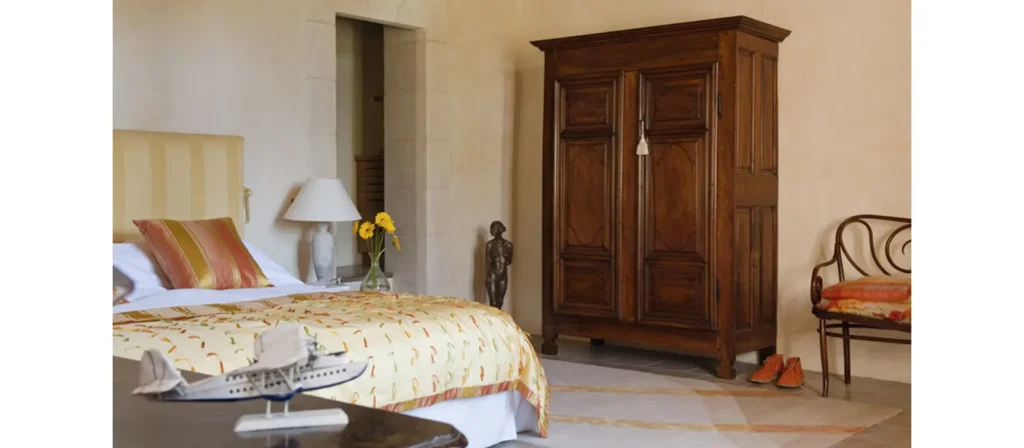
What is an Armoire?
An armoire is a tall, freestanding cabinet traditionally used for storing clothing. Originating from French design, armoires are often ornate, featuring intricate carvings and decorative elements. Unlike modern wardrobes, armoires may lack built-in drawers or shelves, focusing primarily on hanging space. They are typically made from solid wood, adding a classic and timeless appeal to interiors.
Key Features of an Armoire
Armoires vary in design, but they often share these common characteristics:
- Ornate Exterior: Includes carvings, embellishments, and vintage finishes.
- Double Doors: Often opens outwards, revealing spacious interiors.
- Hanging Rod or Shelves: For clothes or multi-purpose storage.
- Drawers or Compartments: May include built-in drawers for smaller items.
- Solid Wood Construction: Typically made from oak, mahogany, or pine.
- Decorative Hardware: Brass knobs or iron handles accentuate its antique feel.
- Convertible Use: Can be used as a media center, office cabinet, or even a minibar.
Differences Between a Wardrobe and an Armoire
| Feature | Wardrobe | Armoire |
|---|---|---|
| Design Origin | Modern, minimalistic | Traditional, antique |
| Common Material | Engineered wood, laminates, metal | Solid wood (oak, mahogany, pine) |
| Style | Sleek, practical | Ornate, decorative |
| Installation | Freestanding or built-in | Freestanding |
| Functionality | Mostly for clothing storage | Multi-purpose: clothes, electronics, decor |
| Storage Configuration | Customizable with shelves, drawers, hanging rails | Includes hanging space, sometimes drawers; less customizable |
| Mobility | Somewhat moveable, but built-ins are fixed | Completely movable |
| Aesthetic Appeal | Matches modern and minimalist decor | Best for vintage, rustic, or French country interiors |
How to Choose the Right Wardrobes and Armoires for Your Bedroom?
Selecting the ideal wardrobe or armoire starts with understanding how much storage you need, the type of items you want to store, and how the unit will integrate with your room’s layout and style. You want a solution that isn’t just functional, but one that enhances the aesthetic and comfort of your personal space.
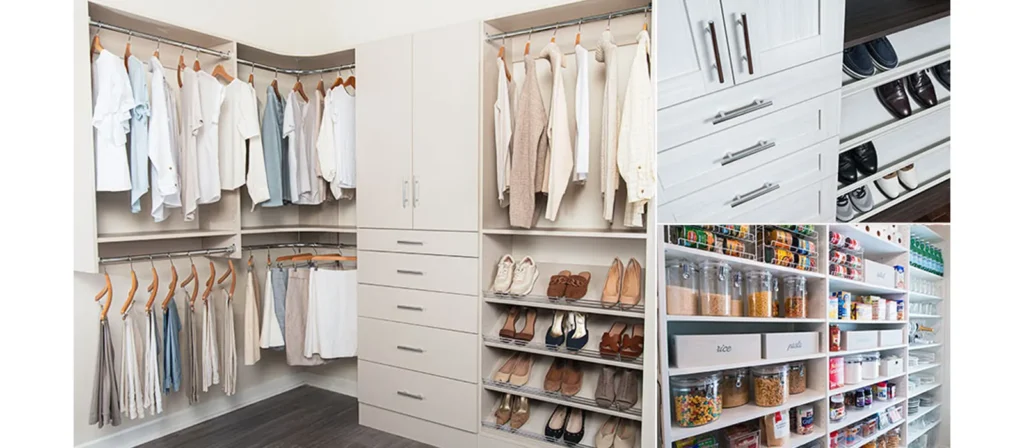
Step 1: Evaluate Storage Needs
Before browsing catalogs or visiting furniture showrooms, take time to understand what you truly need.
1. Storage Needs
Start by listing out what you’ll store: hanging items, folded clothes, accessories, shoes, seasonal wear, even jewelry or linens. Different wardrobe types cater to different storage styles, and choosing the wrong interior configuration can leave you cramped or underutilized.
2. Dimensions
Wardrobes come in various sizes—from compact 2-door units to expansive 4-door sliding wardrobes. Your goal is to match your storage volume to the correct dimensions without overwhelming your room.
| Type | Typical Width | Typical Height | Typical Depth | Ideal For | Space Needed (With Doors Open) |
|---|---|---|---|---|---|
| 2-Door Wardrobe | 80–120 cm | 180–210 cm | 50–60 cm | Small bedrooms, minimal clothing | 90–150 cm |
| 3-Door Wardrobe | 120–180 cm | 180–220 cm | 55–65 cm | Medium storage needs | 150–210 cm |
| 4-Door Wardrobe | 180–240 cm | 200–240 cm | 60–70 cm | Shared bedrooms, more hanging space | 210–280 cm |
| Sliding Door Wardrobe | 150–300 cm | 200–240 cm | 60–70 cm | Space-saving for narrow rooms | No extra clearance needed |
| Corner Wardrobe | 100×100 cm (L-shape) | 200–220 cm | 60 cm each side | Maximize corner space | 120×120 cm |
| Walk-in Wardrobe Unit | Customizable | Customizable | 60–90 cm/module | Large rooms, custom layouts | Full room size |
| Armoire (Classic) | 100–160 cm | 180–220 cm | 55–70 cm | Decorative storage, traditional homes | 120–180 cm |
| Children’s Wardrobe | 60–100 cm | 120–160 cm | 40–50 cm | Easy access for kids | 70–120 cm |
3. Functional Needs
Some prefer adjustable shelves for flexibility, while others need dedicated sections for jewelry, scarves, or bags. Consider whether you want a modular layout or built-in lighting for convenience.
4. Room Size
Smaller bedrooms benefit from space-saving features like sliding doors or mirrored fronts. In large rooms, freestanding or walk-in wardrobes can act as statement pieces while offering ample storage.
5. Consider Accessibility
Will the wardrobe be placed near your bed, door, or window? Make sure drawers and doors open fully without obstruction. Accessibility is key for daily use.
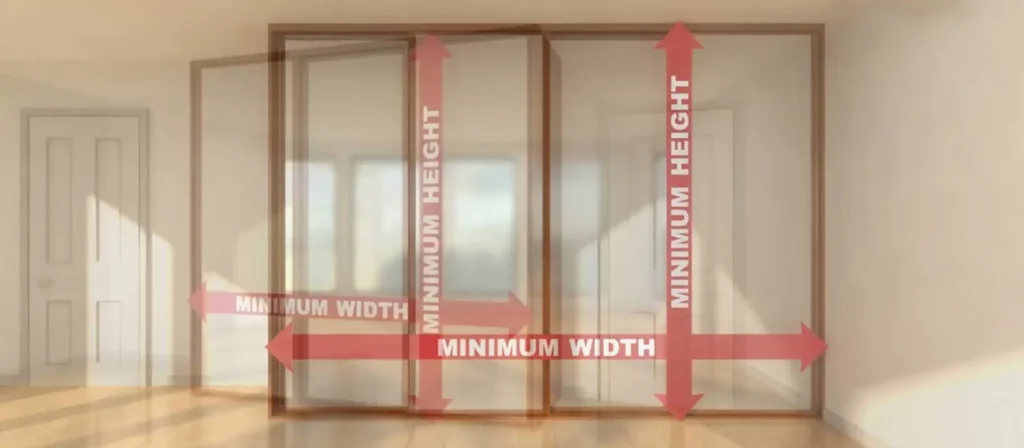
Step 2: Measure Space and Consider Dimensions
One of the biggest mistakes buyers make is ignoring spatial constraints. Measure your room thoroughly before you commit to any wardrobe or armoire.
Include:
- Wall width and height
- Ceiling height (important for tall wardrobes)
- Distance from adjacent furniture
- Door clearance for hinged models
- Walking space in front of the wardrobe
Step 3: Consider Wardrobe Types
Modern furniture design offers a wide array of wardrobe types, each suited to specific needs and preferences.
Jewelry Cabinets
These are compact wardrobes or internal modules with specialized compartments for necklaces, rings, bracelets, and watches. Ideal for those with large accessory collections.
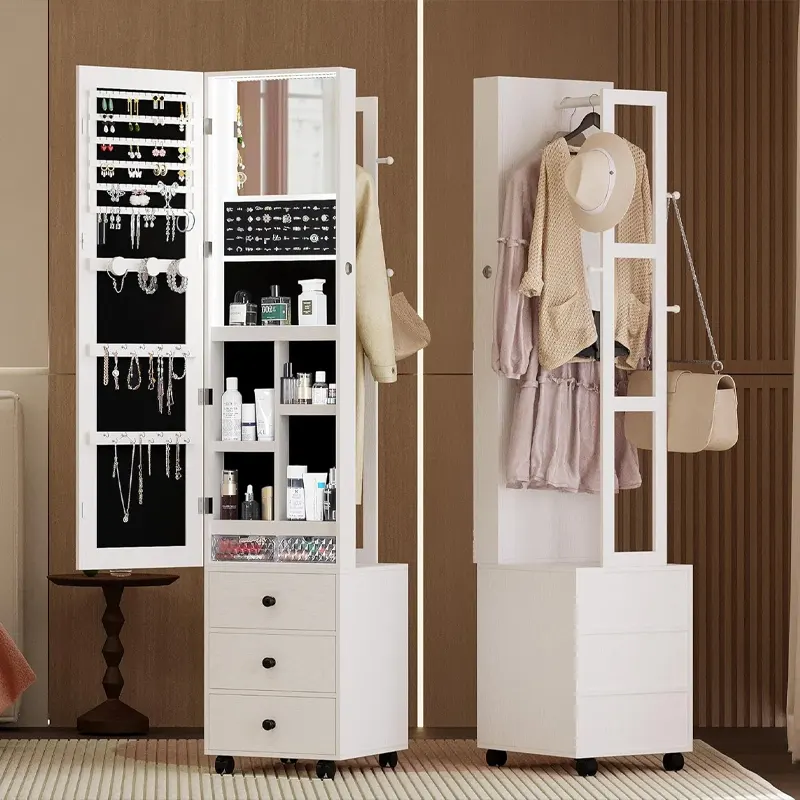
Corner Wardrobe
Designed to utilize unused corners, these wardrobes are great space savers. They’re perfect for irregular room layouts and help you maximize every square foot.
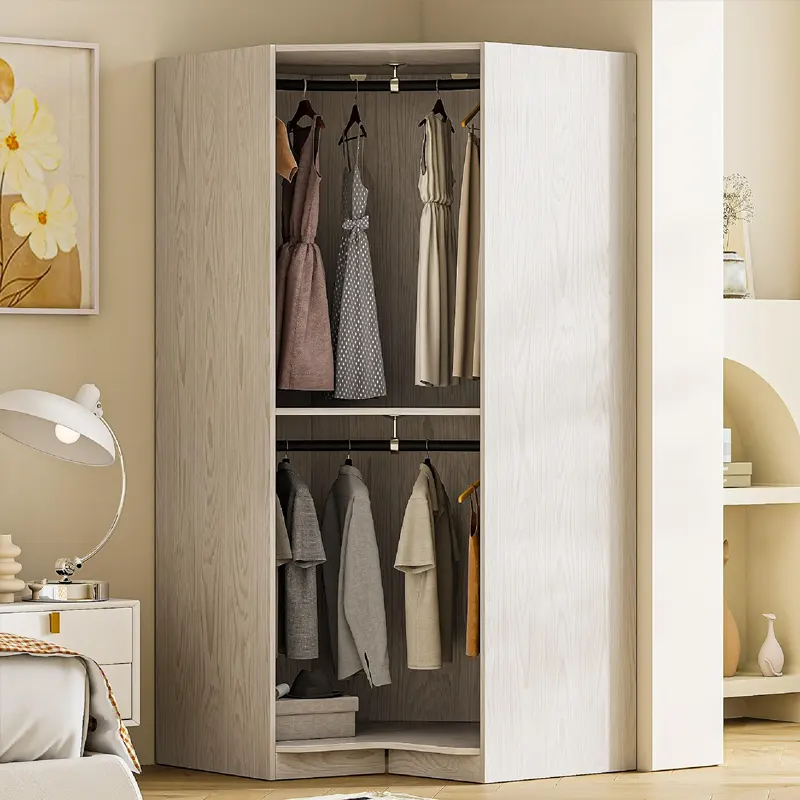
Wardrobe Dressers
A hybrid option that includes a wardrobe for hanging and upper storage, with a dresser-style drawer base. Great for streamlining furniture in a small room.
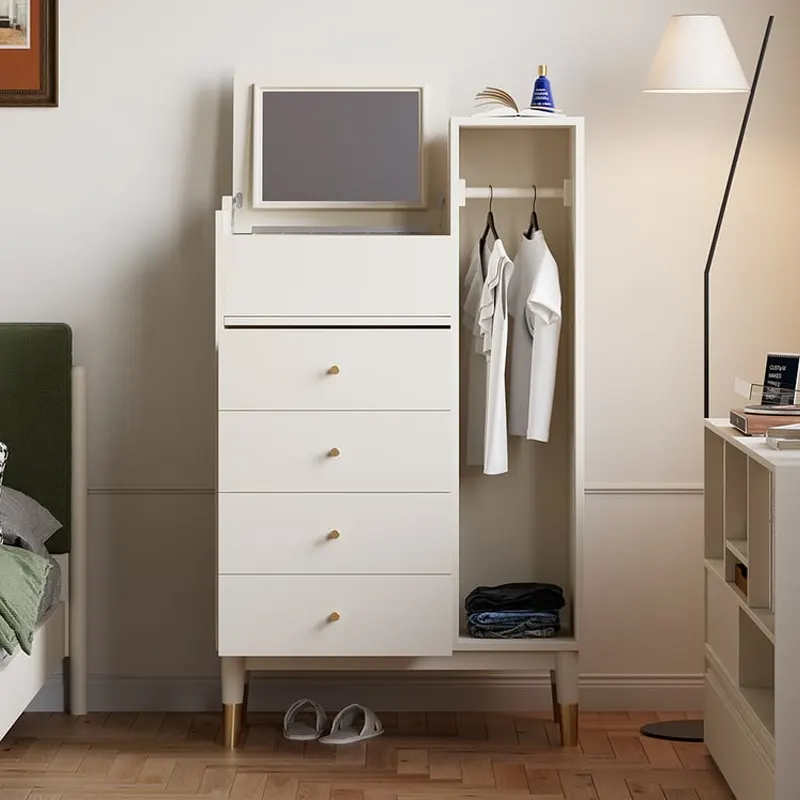
Walk-in Wardrobes
If space permits, nothing beats the luxury of a walk-in wardrobe. Customizable, spacious, and highly organized, they provide a boutique-like experience at home.
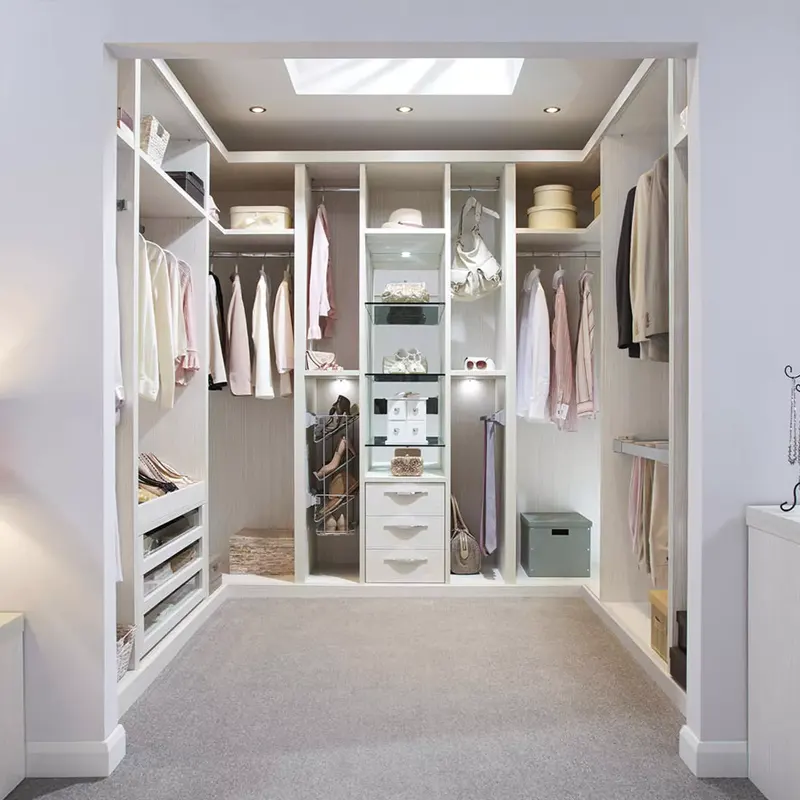
Mirrored Wardrobes
Mirrors serve a dual function—expanding visual space and offering dressing support. Choose full-length mirrored panels for a minimalist and practical touch.
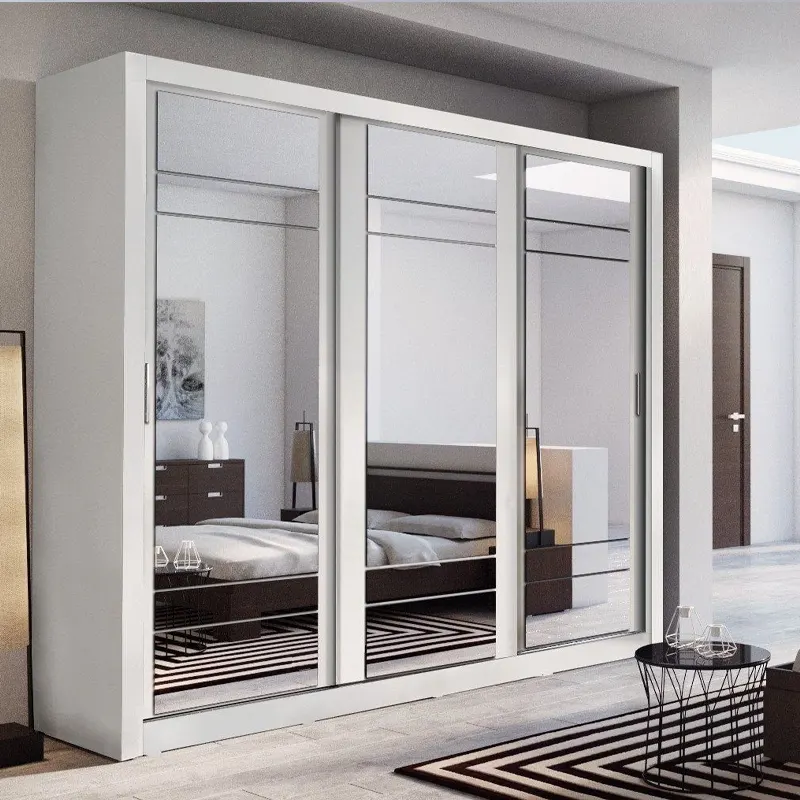
Sliding Door Wardrobes
Ideal for tight spaces, these wardrobes don’t require swing clearance. They offer modern aesthetics and often include internal customization options.
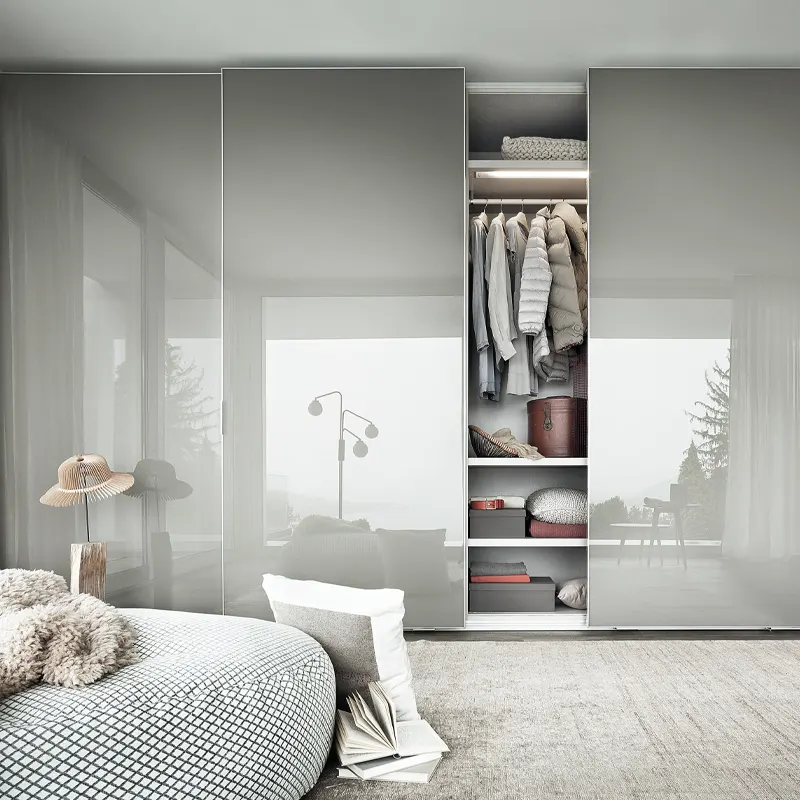
Children’s Wardrobes
Sized appropriately and often featuring playful designs, these wardrobes should prioritize safety, accessibility, and durability. Look for anti-tip features and rounded corners.
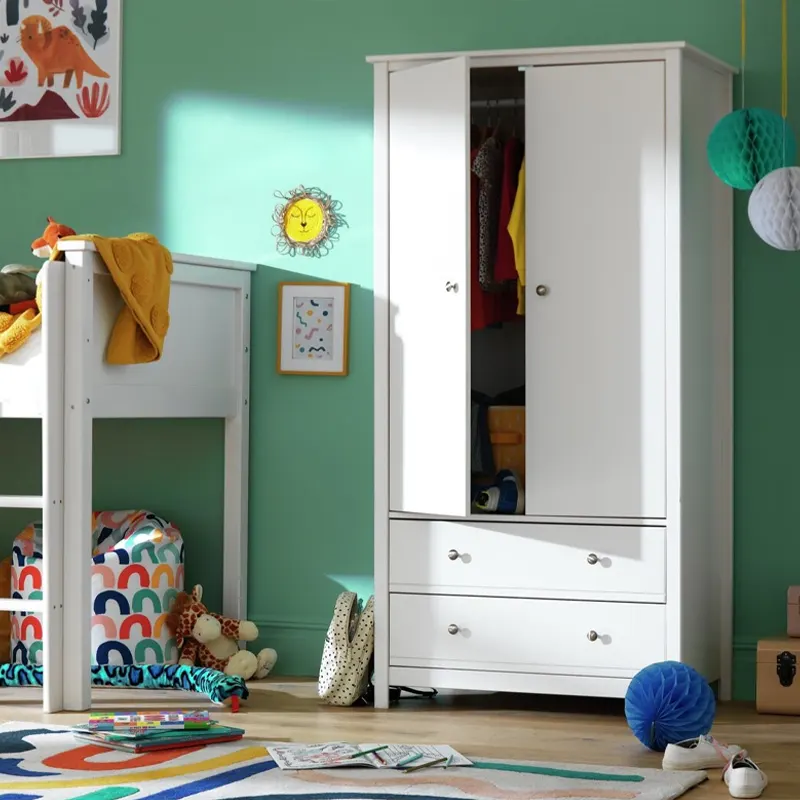
Hinged Door Wardrobes
Classic and versatile, hinged wardrobes offer full visibility of the interior. They’re easier to repair and can support heavier door materials.
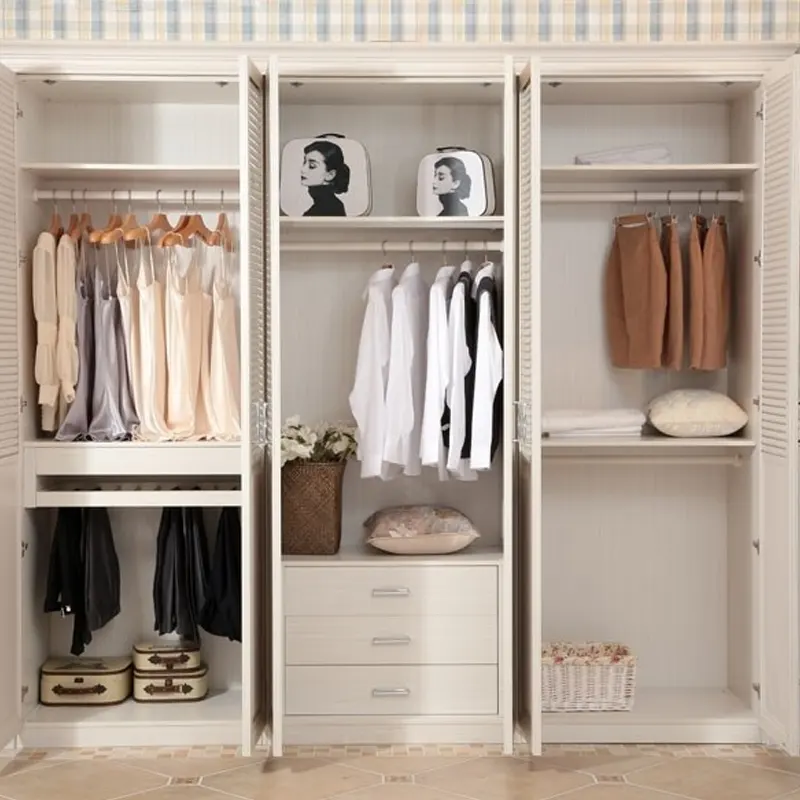
Wall-mounted Wardrobes
These floating units save floor space and create a modern, airy feel. They’re also easier to clean around but require strong wall support and precise installation.
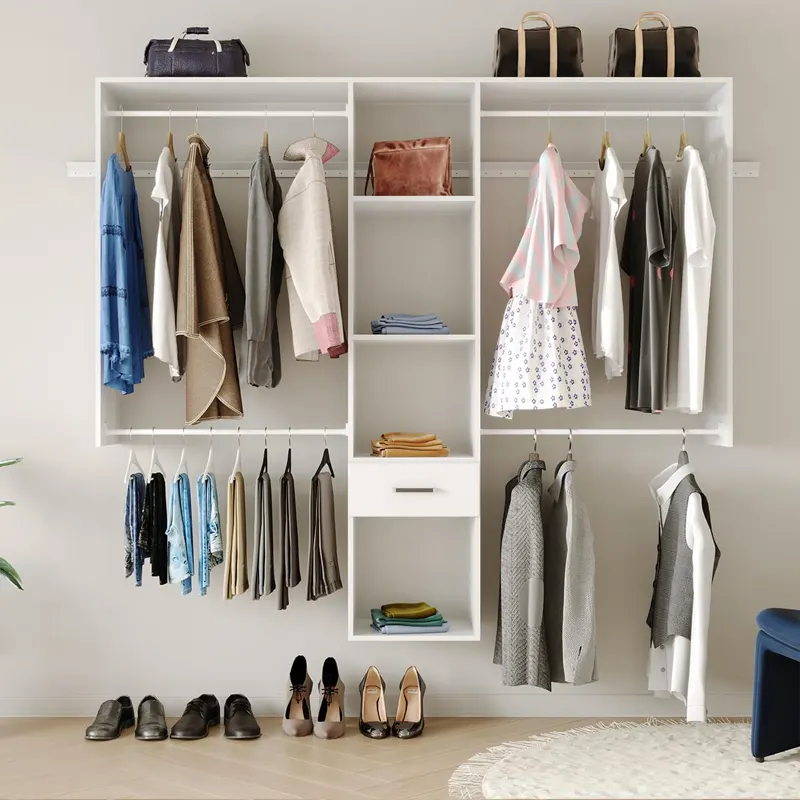
Step 4: Materials and Craftsmanship
Choosing the right material and understanding the level of craftsmanship behind a wardrobe or armoire is critical to its durability, style, and value.
Materials
The furniture material determines not only how long your wardrobe lasts but also how it complements your room’s interior.
- Solid Wood: Long-lasting and strong, solid wood wardrobes add character and warmth to any space. Common types include oak, maple, walnut, and pine. Though more expensive, they age beautifully.
- Engineered Wood (MDF or Plywood): These are more affordable alternatives that offer consistent finishes and lightweight construction. They’re easier to customize but can’t match the longevity of hardwood.
- Metal: Best for industrial-themed spaces. Lightweight and often modular, metal wardrobes are low-maintenance and highly durable.
- Glass Panels: Often used as doors or accents. They add elegance but require frequent cleaning and careful handling.
- Laminates & Veneers: These offer a balance between style and budget, available in endless textures and colors. However, they’re less resistant to water and wear over time.
Craftsmanship
Good craftsmanship is evident in the precision of joints, smooth drawer operation, secure door fittings, and balanced finishes. High-quality wardrobes use dovetail joints, mortise and tenon construction, and soft-close hardware. These elements aren’t just cosmetic—they ensure long-term performance.
Signs of superior craftsmanship include:
- Seamless joints with no visible gaps
- Sturdy back panels that don’t wobble
- Smooth gliding doors and drawers
- Even, consistent finishes with no chipping
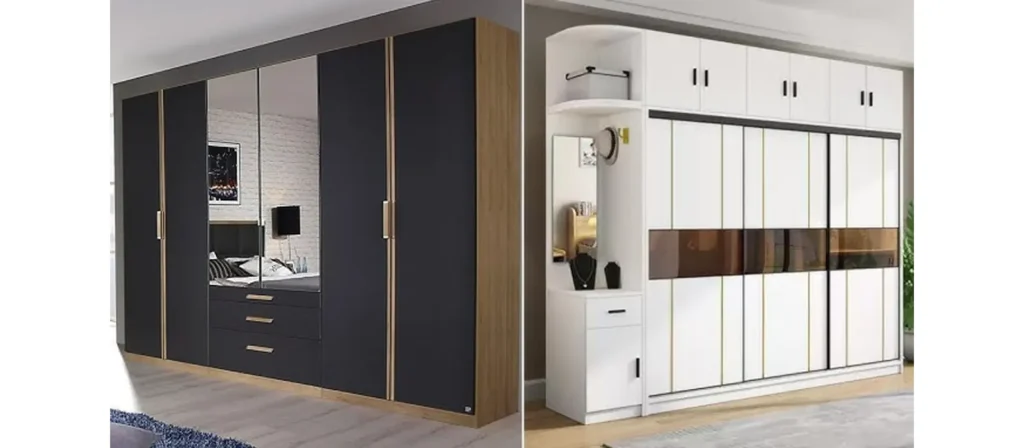
Step 5: Choose Wardrobe Style
The style of your wardrobe or armoire should align with your room’s overall decor theme. Whether your aesthetic is sleek and contemporary or rich and traditional, there’s a perfect match for you.
Antique
Antique wardrobes are often handmade and feature ornate wood carvings, rich tones, and brass accents. They work beautifully in heritage homes or traditional interiors. These pieces are often heirlooms or found in vintage shops.
Modern
Characterized by minimal design, neutral colors, and handle-less doors, modern wardrobes focus on function and form. Materials like lacquered MDF, glass, and mirrored panels are popular in this category.
French
A wardrobe with a French flair typically has cabriole legs, scalloped edges, and decorative moldings. Painted finishes, often in soft whites or pastel tones, enhance their romantic look.
Country Style
This style emphasizes rustic charm with distressed finishes, solid construction, and classic wood tones. Often features barn doors or cross-braced panels, perfect for cottage-style homes.
Farmhouse Style
Combines traditional design with a lived-in appeal. Farmhouse wardrobes are often whitewashed or crafted from reclaimed wood, creating a homely and inviting atmosphere.
Mid-Century Modern
Defined by clean lines, tapered legs, and a balance of wood and metal elements. Wardrobes in this style often use teak or walnut veneers and emphasize simplicity.
Bohemian Style
Boho wardrobes mix patterns, colors, and natural materials. Woven rattan panels, hand-painted accents, or repurposed antique finishes are typical features. Great for eclectic interiors.
Step 6: Accessorize
Wardrobe accessories enhance functionality and can be tailored to match your unique lifestyle.
Here are the most popular wardrobe elements that users look for when they choose wardrobes and armoires:
- Pull-out Tie/Belt Rack: Keeps accessories organized.
- Full-length Mirror Door: Combines function with space-saving design.
- Soft-close Drawers: No more slamming or wear and tear.
- Hidden Jewelry Trays: Concealed, velvet-lined sections for valuables.
- Height-adjustable Shelves: Customize the interior as your needs evolve.
- LED Motion Lighting: Illuminates contents automatically.
- Built-in Lock: For secure storage of personal items.
- Open Compartments: For baskets or shoes at the bottom.
Adding these features to your wardrobe will make everyday use smoother, cleaner, and more efficient.
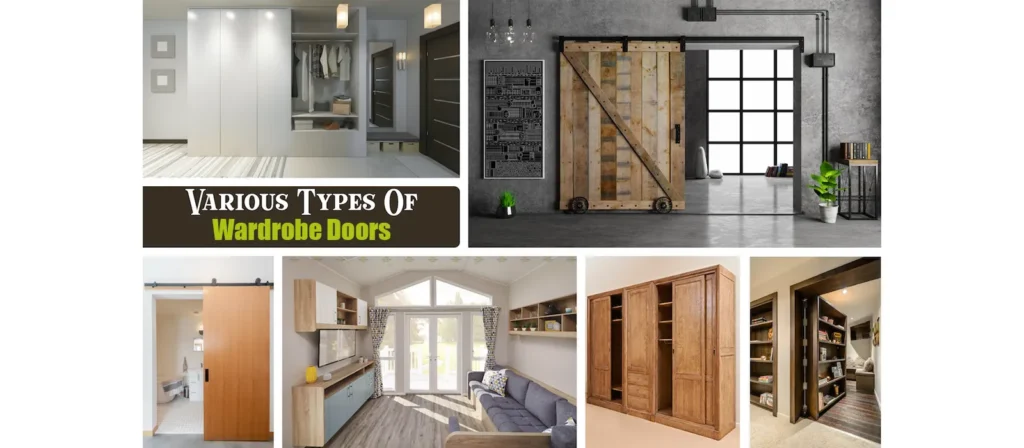
What Do I Need to Know About Wardrobe Doors?
Doors can dramatically influence how your wardrobe functions and fits within a room. Besides serving a practical purpose, doors also define the wardrobe’s style.
Here’s what you need to consider:
- Swing Space: Hinged doors require clear space in front, while sliding doors do not.
- Accessibility: Hinged doors allow full access to all sections at once, while sliding doors restrict access to one side at a time.
- Design Variety: Hinged doors are easier to customize with external decorations, mirrors, or panels.
- Durability: Sliding door mechanisms must be high quality to avoid jamming or derailment over time.
- Noise Levels: Soft-close hinges or smooth-gliding sliders can keep the experience quiet and smooth.
Doors can also be mixed—some wardrobes combine sliding panels with traditional doors for added flexibility. Your choice should align with your room’s layout and daily usage needs.
Consider Wardrobe Door Types
Let’s break down the most common types of wardrobe doors and what they offer:
Hinged Doors:
- Classic and flexible
- Easier to repair
- Allow for internal attachments like mirror panels or organizers
Sliding Doors:
- Space-saving design
- Ideal for smaller rooms or corridors
- Sleek and modern look
Bi-Fold Doors:
- Great for wide openings
- Require less clearance than hinged but more than sliding
Glass Panel Doors:
- Adds sophistication
- Transparent or frosted for visual interest
Mirror Doors:
- Functional and aesthetic
- Ideal for dressing areas
Custom Wardrobes and Armoires
When standard solutions don’t cut it, custom wardrobes and armoires are your best bet. Whether you’re furnishing a small studio or creating a luxury walk-in closet, custom designs allow you to define dimensions, layout, style, and finishes down to the smallest detail.
Because one-size-fits-all rarely fits at all. Custom options help you tailor every shelf and drawer to your routine, maximize storage in awkward corners, and integrate the wardrobe seamlessly with your room’s architecture and aesthetic.
Custom wardrobes often include options like adjustable rails, pull-out baskets, shoe racks, and even tech features like smart lighting or remote locks. Though more expensive, they often bring greater satisfaction in both usage and appearance.
Where Can I Buy a Custom Wardrobe?
Finding the right place to get your wardrobe custom-built is half the battle. Here are some options to consider:
- Local carpenters and designers: They offer a hands-on approach and flexibility.
- Furniture boutiques: Mid-range to luxury options with semi-custom modules.
- Online configurators: Websites like Xiha Furniture, IKEA, Wayfair, and other websites offer custom design services.
- Interior design firms: Ideal if you’re doing a full bedroom renovation.
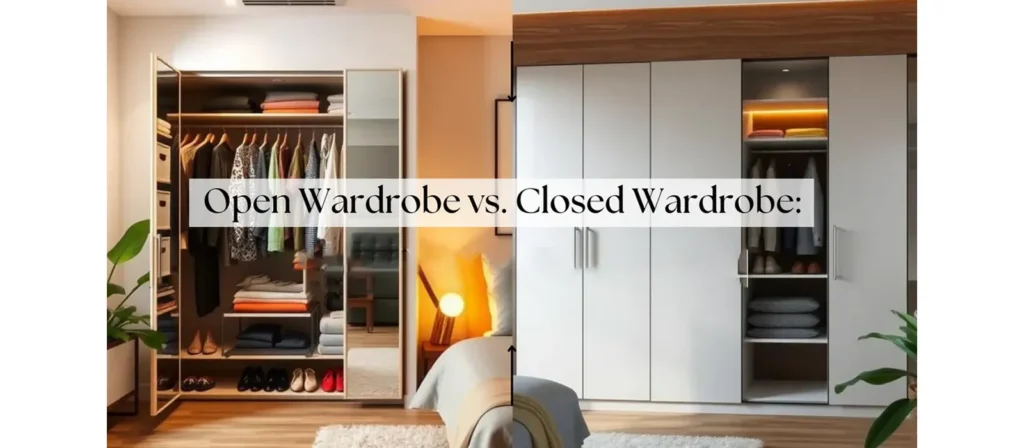
Should I Use Open or Closed Wardrobe?
Choosing between open and closed shelving impacts how you interact with your wardrobe daily. Both have specific benefits based on your habits, aesthetic, and space.
Benefits of an Open Wardrobe
Open wardrobes are ideal for fashion lovers who treat clothing as part of room decor. Key advantages include:
- Easy access to all garments
- Encourages regular organization
- Makes the room appear spacious if styled neatly
- Ideal for minimalists or capsule wardrobe users
Benefits of a Closed Wardrobe
Closed wardrobes offer a clutter-free look and protect clothing from dust and light exposure. Benefits include:
- Concealed storage for a polished appearance
- Better for bedrooms with pets or shared usage
- Reduces visual noise in small spaces
- Easier to maintain privacy and security
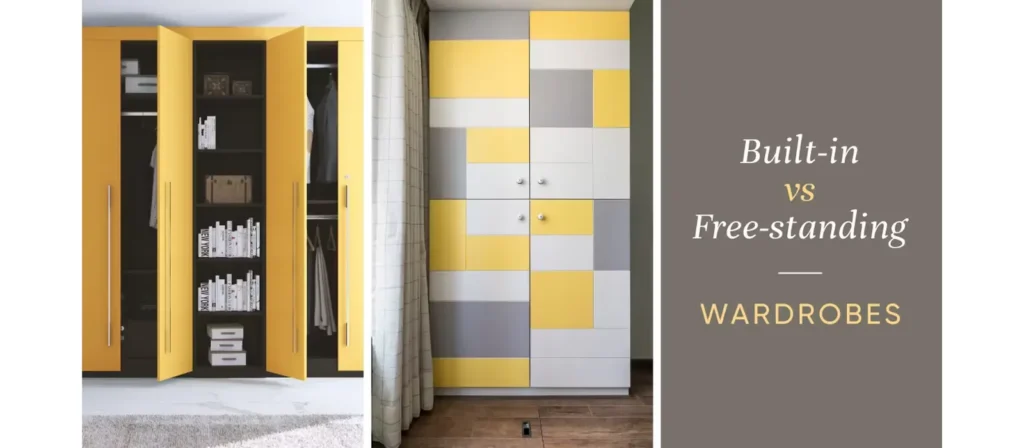
Built-In vs. Freestanding Wardrobes
When it comes to wardrobe installations, you’ll face a crucial decision—should you go for a built-in or freestanding model? Each has its merits depending on your space, lifestyle, and design preferences.
Built-In Wardrobes:
- Custom Fit: Designed to blend seamlessly with your room’s dimensions.
- Permanent Fixture: Ideal for homeowners seeking long-term solutions.
- Integrated Design: Enhances the aesthetic appeal and may increase property value.
- Limitations: Requires professional installation and is not movable.
Freestanding Wardrobes:
- Mobility: Easy to relocate or replace, especially suitable for renters.
- Versatility: Available in a wide range of styles, sizes, and finishes.
- Cost-Efficient: Often more affordable than custom built-ins.
- Limitations: May not utilize all vertical or horizontal space.
Your decision should consider both aesthetic preferences and how long you plan to stay in your current residence.
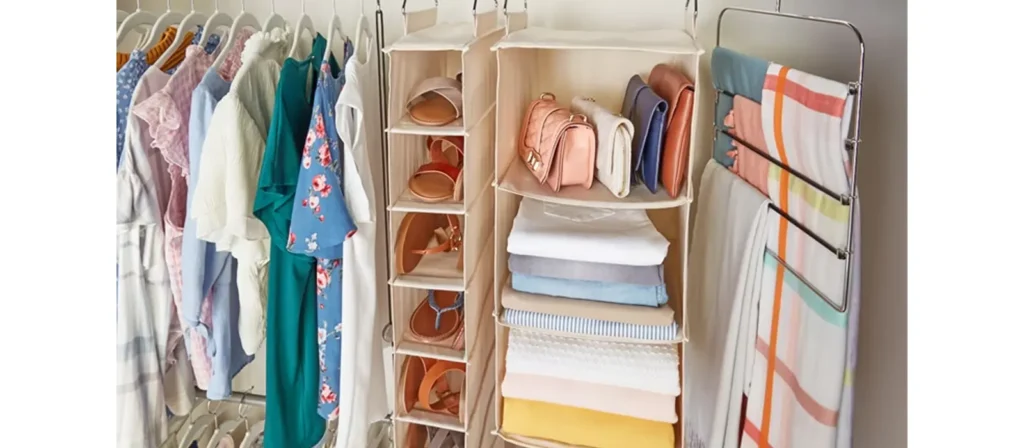
Tips for Saving Wardrobe Space
Even the most spacious wardrobes can become chaotic without smart organization strategies.
1. Make the Most of Vertical Space
Use the full height of your wardrobe. Install extra shelves near the top for seasonal items or rarely used belongings. Use double-hanging rods to multiply hanging space for shorter garments.
2. Use Dividers and Risers
Drawer dividers, shelf risers, and stackable boxes multiply surface area. They keep similar items grouped and easily accessible.
3. Use Doors
The inside of doors is valuable real estate. Add hooks or slim racks for belts, scarves, or jewelry.
4. Clean Before You Organize
Purge unused or outdated clothes before organizing. It prevents clutter and helps you assess actual storage needs. Regular cleaning keeps your wardrobe fresh and functional.

What Smart Storage Features Should a Modern Wardrobe Have?
Today’s best wardrobes aren’t just about space—they’re about smart living. If you’re upgrading or buying new, consider these tech-savvy or functional innovations:
- Pull-Down Hanging Rails: Make high storage areas accessible.
- Motion-Activated LED Lights: Brighten dark corners and save energy.
- Built-in Charging Stations: Great for walk-in wardrobes or multi-purpose spaces.
- Built-in dehumidifiers or ventilation panels: Protect clothes from mildew.
- Electronic locks or RFID security: For wardrobes storing valuables.
- Modular Interior Layouts: Allow you to adapt over time as your storage needs change.
What to Consider When Renovating Your Wardrobe
A wardrobe renovation is more than changing a few doors. Whether you’re replacing or upgrading, here’s what to consider:
- Current Weaknesses: What bothers you about your existing wardrobe? Fix that first.
- Budget: Factor in materials, labor, and unforeseen adjustments.
- Room Layout: Use the renovation as an opportunity to improve furniture flow.
- Storage Evolution: Anticipate future needs (kids growing up, seasonal gear, etc.).
- Design Style: Match or modernize your current bedroom aesthetic.
- Lighting: A small lighting upgrade can completely transform wardrobe usage.
- Eco-Friendliness: Consider sustainable materials and finishes for long-term benefit.
Renovation offers a clean slate to correct past mistakes and build a smarter, better wardrobe experience.

What Wardrobe Decor Trends Are Trending in 2025?
As we move deeper into 2025, wardrobe design continues to fuse functionality with high-end style. Noteworthy trends include:
- Natural Materials: Think bamboo, cane, and reclaimed wood—sustainable and beautiful.
- Two-Tone Designs: Contrasting doors and interiors create visual depth.
- Integrated Vanity Units: Adding mirrors, lighting, and drawers within wardrobes.
- Integrated tech: Touch-to-open doors, wardrobe apps for tracking outfits.
- Earth Tones: Warm beiges, greens, and muted browns are dominating interiors.
- Textured Finishes: Ribbed panels and linen-covered doors add tactile appeal.
- Minimalist Handles or Handle-less Designs: Sleek, seamless aesthetics prevail.
FAQs
- Which is better: sliding or hinged doors?
Sliding saves space and looks modern; hinged doors offer full visibility and flexibility. Choose based on room layout and personal preference. - What’s the best material for wardrobes?
Solid wood is the most durable but costly. Engineered wood and laminates offer affordability and design variety. Choose based on your budget and style. - Are mirrored wardrobes good for small rooms?
Yes, mirrors reflect light and create an illusion of space, making them perfect for smaller rooms. - How do I measure my room for a wardrobe or armoire?
Measure the width, height, and depth of the space where the unit will go. Leave extra room for door clearance and walking space. Consider ceiling height and any architectural elements like beams or alcoves. - How do I maintain a wooden wardrobe or armoire?
Dust regularly, avoid direct sunlight, use furniture polish occasionally, and check for moisture damage. Install dehumidifiers or camphor to protect contents from humidity. - How can I make the most of a small bedroom with limited wardrobe space?
Use sliding doors, vertical shelving, mirrored panels, and multifunctional designs like wardrobe dressers or wall-mounted units to maximize space without compromising style.
Conclusion
Learning how to choose wardrobes and armoires is a smart investment in both form and function. From material and size to style and budget, every detail matters. Prioritize what aligns with your lifestyle and room aesthetics. With the tips and insights above, you’re now ready to make an informed, stylish, and practical choice.
Choosing the right wardrobe or armoire isn’t just about storage—it’s about defining your room’s identity. Whether you go sleek and modern or classic and vintage, the right choice will elevate your living space, simplify your routines, and even boost your home’s value.
Remember, your wardrobe isn’t just where clothes live—it’s where style begins every morning.



